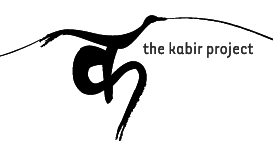Initiating Kabir in the classroom


Via Teacher Plus (and written by our friend Chintan Girish Modi)
What might Kabir, a 15th century saint-poet, have to offer present day schools? This question has been central to the Kabir Project’s recent explorations in the field of education. As part of our ongoing work with schools and interactions with educators, we have mapped out some broad areas to explore further and build on the developing insights. Instead of making a package for instant delivery to schools, the emphasis is on building relationships with them and coming up with ideas suited to the needs, context and culture of each school. The resources we draw on include the poetry of Kabir, the musical renditions of it by various folk and classical singers, the Kabir films made by Shabnam Virmani, children’s books, and anything else that we can lay our hands on. There is a strong intention to collaborate with other organizations and initiatives dedicated to peace, nonviolence and harmony.While Kabir’s poetry grew out of his response to the concerns of his time, it continues to speak to us in the present day. The critical spirit of his words is a refreshing change from empty gestures of solidarity that come in the guise of proclamations about all human beings being part of one large family. Hindu Muslim Sikh Isai, Hum Sab Hai Bhai Bhai is something we often hear as part of national integration speeches, but how often do we initiate conversations about these differences in school? How can we embrace when we are not prepared to engage with ‘different-ness’? An appreciation of a shared humanity that binds us all can come only from interrogating what led to these divisions in the first place. This brings us to exploring the territory of labels, stereotypes, selfhood, othering, caste, religion, and so on. Our aim is to encourage children to examine the nature of conflict, its causes and how it can be overcome. And this seems especially important in a world where polarities are rigidly marked and identities are quickly consolidated, on the basis of something as fleeting as thought and opinion. We recently showed Shabnam Virmani’s film Had-Anhad to students at Shishuvan school in Mumbai, where it opened up discussion about popular perceptions and stereotypes regarding Pakistan, and the source of these – newspapers, films, and parents. Listing out the images that Pakistan conjured up in their minds was easy, but it took them a while to interrogate where these images came from.While environmental education has become a buzzword in schools, it is approached mostly through the lens of science. The assumption is that of human beings and nature as separate entities in conflict with each other because of competing priorities. We want to infuse this space with the energy of mystical poetry and folk traditions that enable us to see the place of human beings in a deeper, connected ecosystem. What sparked off this idea was the story of a brave little parrot dousing a raging forest fire, which we encountered in a Kabir bhajan sung in Rajasthan. This song strikes an instant chord with students and teachers. It inspired students of Shibumi school in Bangalore to come up with some beautiful paintings and even a theatrical interpretation of the story. Research around that story led us to various versions told in cultures around the world.
Read about how the Kabir Project is introducing children to Kabir and the work done by the project.








